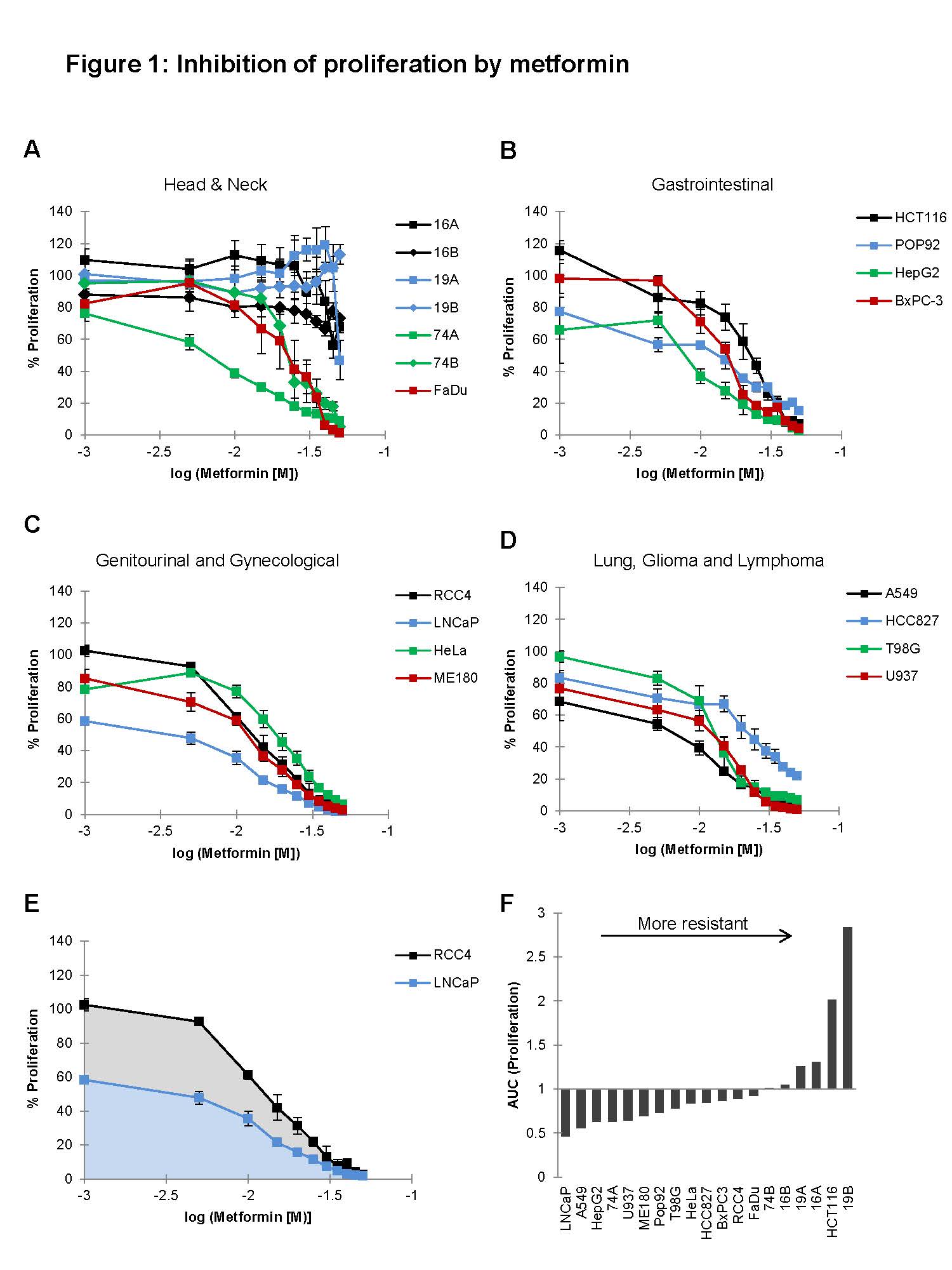The drug metformin is typically used to treat Type 2 diabetes, and some cancer patients have shown improved outcome when given the drug. A recent study by TFRI’s hypoxia group sheds new light on biomarkers that may indicate the drug’s efficacy in patients.
Metformin inhibits mitochondrial function inside cells, thereby reducing oxygen consumption and interfering with cell proliferation. The team examined its effects on oxygen consumption, cell growth, and the expression of organic cation transporters (OCTs) and multi-drug and toxin extrusion transporters (MATEs) in a panel of 19 cancer cell lines. The expression of these transporters is known to mediate the anti-diabetic effects of metformin, but they have not been extensively studied in cancerous cell or tissues. The group sought to determine their potential roles as predictive biomarkers.
Published in PLOS ONE in December 2016, study results showed that all cancer cells are susceptible to the inhibition of oxygen consumption by metformin, which increases the radiotherapy response by reducing hypoxic tumour fractions. However, results suggested MATE2 expression might result in resistance to the anti-proliferative (prevention of growth) effect of metformin and should be considered as a negative predictive biomarker in clinical trials.
Interestingly, the anti-proliferative response of different cell lines had high variability and some cell lines were very resistant. Notably HNC (head and neck cancer) cell lines were most resistant while the prostate cancer LNCaP cell line was most sensitive. Also sensitive was the lung carcinoma line A549.
The study also showed that when mice with A549 tumours were given anti-diabetic doses of metformin it resulted in intra-tumoral accumulation of metformin and reduced hypoxic tumour fractions.
The team’s previous research showed patients respond poorly to treatment if their tumours are low in oxygen, a state known as ‘hypoxia’. These tumours are more likely to grow and spread aggressively, whereas reduced oxygen consumption often leads to improved tumour oxygenation and radiation response.
The team is currently running a clinical trial assessing the benefit of metformin in patients with cervix cancer, and are exploring whether tumor expression of OCTs and MATEs can serve as predictive biomarkers for the benefit of metformin.
Study: MATE2 Expression is Associated with Cancer Cell Response to Metformin
Authors: Sanjana Chowdhury, Eric Yung, Melania Pintilie, Hala Muaddi, Selim Chaib, ManTek Yeung, Manlio Fusciello, Jenna Sykes, Bethany Pitcher, Anna Hagenkort, Trevor McKee, Ravi Vellanki, Eric Chen, Robert G. Bristow, Bradly G. Wouters, Marianne Koritzinsky.
Funding: This work was financially supported in part by the Terry Fox Research Institute (New Frontiers Research Program PPG14-1036; to M.K, R.G.B and B.G.W).
Chart info (Chart F on 8/18 of article)

The chart above: The AUC* was normalized across the cell panel and is shown after arranging cell lines in order of increased resistance (*area under-dose response curve).
TFRI Links, Spring 2017